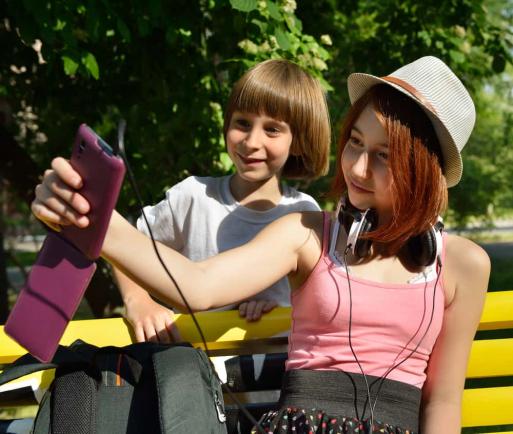
As more parents and grandparents embrace Facebook, teens seem to gravitate towards newer forms of social media. They are weary of mom posting old photos of them and telling family stories, no matter how cute and adorable their parents think they are.
A popular app among teens is Snapchat, a free photo and video sharing app. Teenagers love the ability to "share a silly moment" with their friends, and in less than 10 seconds it disappears. Being informed and setting family social media rules can help guide children through a digital maze that may otherwise lead to heartache or disaster.
Here are 10 things parents and kids should know about the Snapchat app before deciding whether or not to use it.
-
It's easy to use. Teens find it a fun way to stay in touch with close friends by sharing crazy photos while at the mall, at school (there are probably rules against that), or anywhere else. It's a digital communication tool and, as such, can be used for good or bad. Discussing appropriate use of Snapchat with your teens can help prevent problems if you decide to allow them to use it.
-
Some teens assume that because video and photo texts or "Snaps" as they are called, disappear in just a few seconds the app is totally harmless. However, photos can be saved as screenshots. This is worrisome for parents because they have no control over what comes across their teenager's screen at any given moment. It also could become fodder for future cyber bullying.
-
Snapchat has "Terms of Use" that need to be read and discussed. These terms include verifying the user is at least 13 years of age and, if under age 18, they have parental permission. The user also agrees to grant Snapchat access to their address book and allows it to upload that information to its servers. Now you have just shared private contact information on your family and friends without their permission.
-
When you send a Snap to someone via "Snapchat" you give Snapchat a "nonexclusive, worldwide, royalty-free, sublicensable and transferable license to use, reproduce, modify, adapt, publish, create derivative works from, distribute, perform and display such user content in connection with the services, subject to your use of privacy settings in the services to control who can see your user content." See Terms of Use.
-
Once you create a Snapchat account, you accept total responsibility for whatever activity occurs while you are logged on. One 15-year-old boy exchanged Snaps with a 14-year-old girl. At first, they were fun. Soon she was sending photos of her wearing just her underwear. Eventually she sent some Snaps showing her topless. The boy saved them. When his mother discovered the pictures, she was shocked and checked the state laws. Because the girl was 14, it was considered child pornography possession for her son to have those photos on his phone. The girl's parents could press charges, and he most likely would have to register as a sex offender. Fortunately, this was handled between the families involved and a very serious situation was averted. (This information is from a personal interview with the mother).
-
Even for kids who are careful and use precautions in what they send out and to whom they send it to, the fact exists that once anything it posted online, it is public - even if the picture disappears in a matter of seconds. It's still possible for anything you post to catch up with you. According to Adam McLane, "There's no such thing as anonymity online, only perceived anonymity. Any time your device connects to the Internet it associates 100 percent of your activity with your device. (Every device has a unique identifier, like a fingerprint. When you buy it and register it, that transaction is linked to you and everything you do with it is ultimately pointing back to you)."
-
A modified version, "Snapkidz," is available for children younger than 13. They can still take Snaps, draw on them and create captions. However, the similarities end there. The function of sending or receiving Snaps is not supported. The entire experience occurs on the user's device where their Snaps are saved.
-
Some Snapchat users may be surprised that forensic experts claim any data can be retrieved from one's cell phone, even after the images have been deleted. See the article, "Forensic experts poke holes in Snapchat and Facebook."
-
Verizon offers good information for parents: "What Parents Need to Know about Snapchat." There is a legitimate concern that Snapchat could be used for "sexting" - sending sexually suggestive pictures or even nude pictures. Help teens realize that with the screen capture capability, it's possible for private pictures to be circulated on the Internet.
-
Talk to your teens about Snapchat and all forms of social media. Find common ground you can agree on. Today's teens are technologically savvy. Let them teach you about the apps they like to use and why. Make sure teens realize that what they post now could surface later in life when they least expect it. One's online presence leaves a trail. Help them make smart decisions to keep themselves and their reputations safe.
This digital age makes "do-overs" more difficult. Remember, the only sure way an improper video or photo never gets distributed at-large is to not put it out there in the first place. Let's all learn to use technology for all the good it can produce and for recording the precious moments of our lives.

